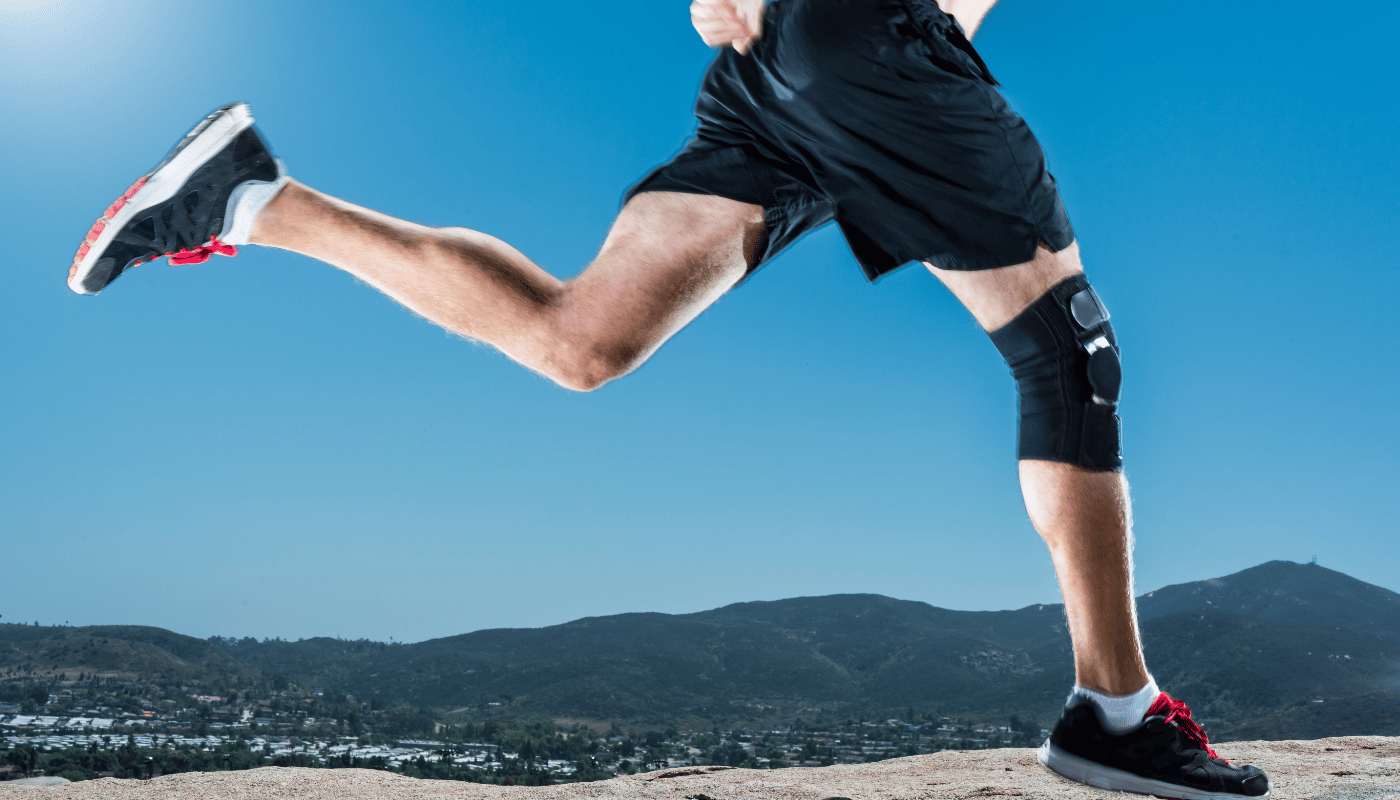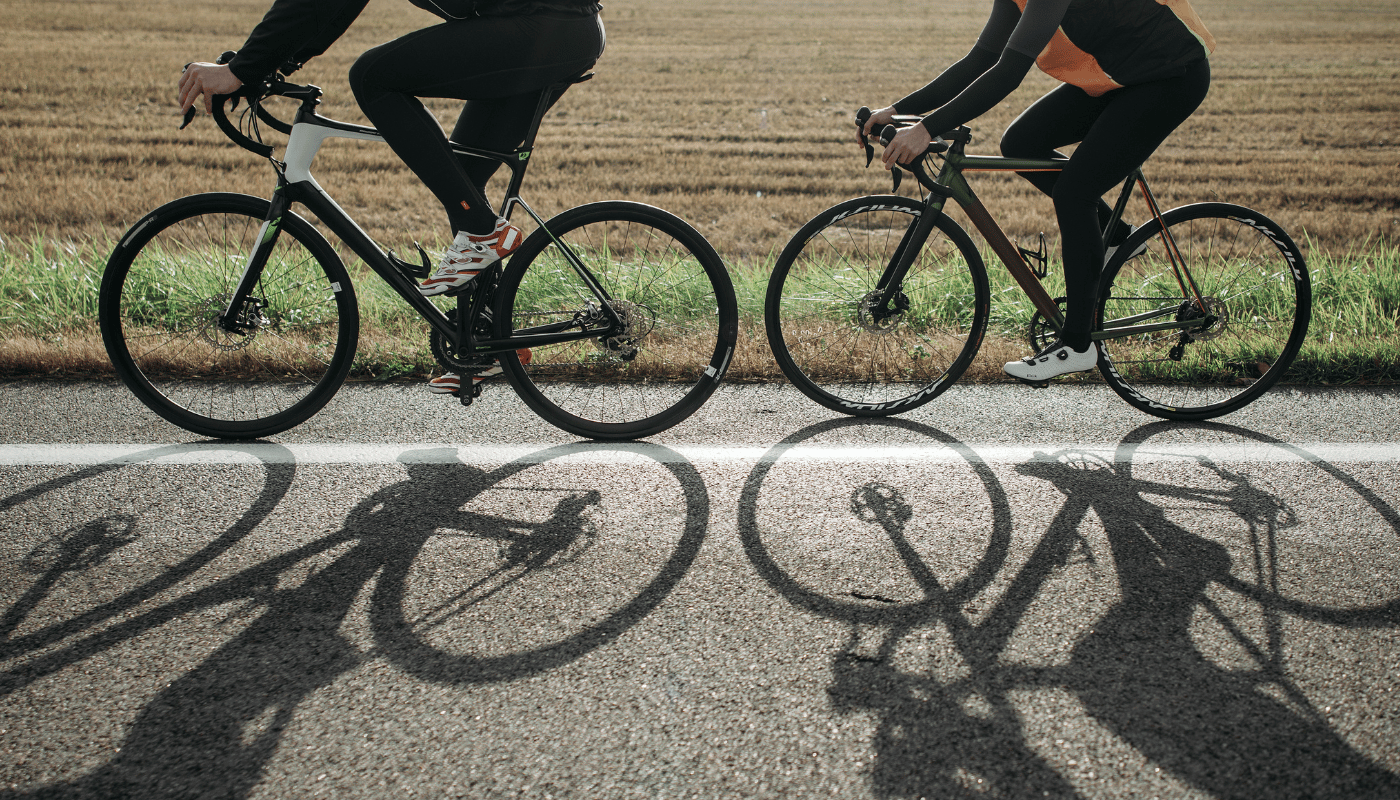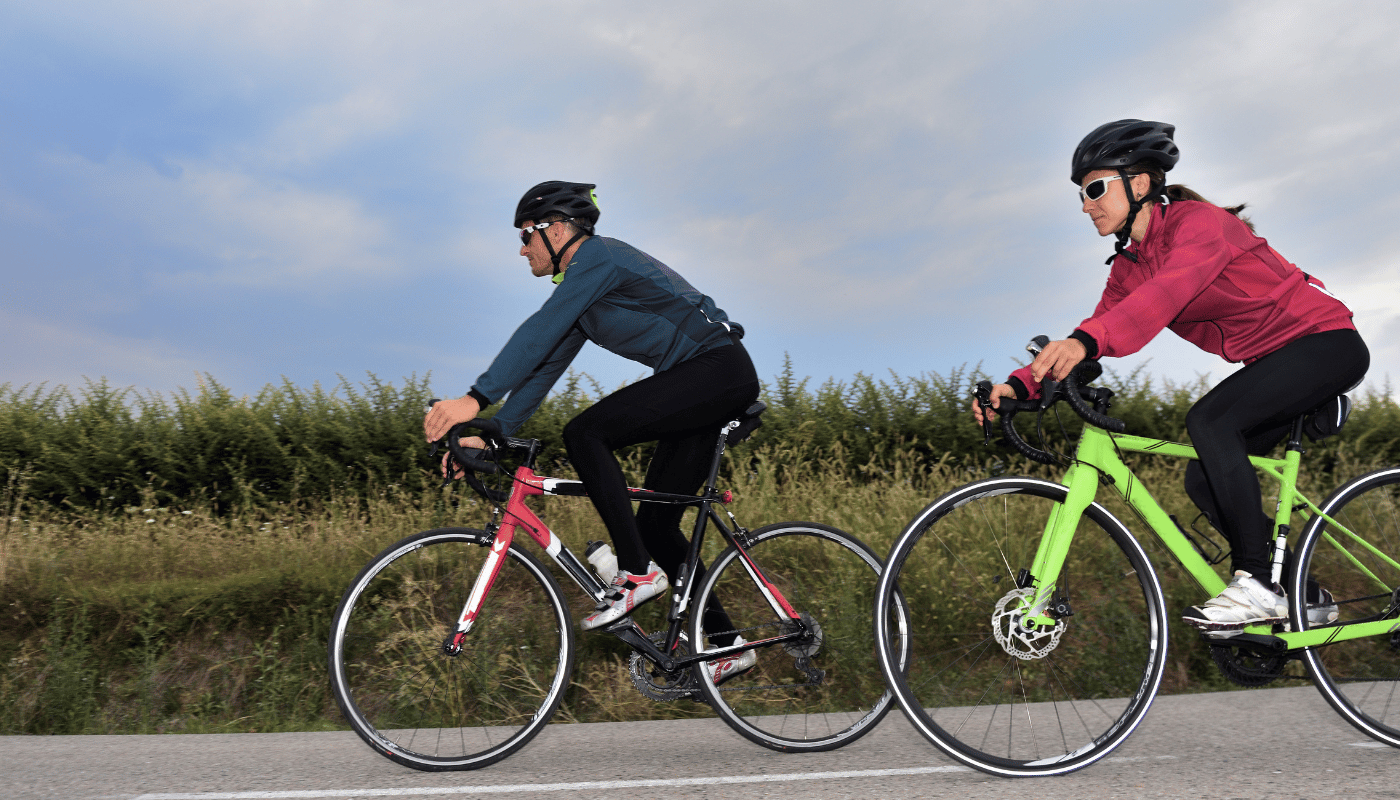Knee pain is one of the most common complaints among cyclists, affecting recreational riders and professionals. The repetitive nature of cycling, combined with prolonged periods of pedalling, places significant stress on the knee joint. Over time, improper cycling posture, poor bike fit, or overtraining can lead to discomfort and even injury.
One of the primary causes of knee pain in cyclists is overuse. Unlike sports with varied movements, cycling involves continuous, repetitive motion. This repetitive action can strain the patellofemoral joint, commonly leading to patellofemoral pain syndrome, also known as “cyclist’s knee.” Similarly, iliotibial band syndrome (ITBS) is another frequent issue caused by the IT band rubbing against the outside of the knee during cycling. Both conditions can cause persistent discomfort and hinder performance.
Biomechanical issues also contribute to knee pain. For instance, an improperly adjusted saddle height or incorrect pedal alignment can alter the angle of the knee joint, resulting in uneven pressure distribution. Over time, these misalignments can lead to chronic pain or inflammation.
For many cyclists, knee pain raises an important question: “should I wear a knee brace while cycling”? A knee brace can provide additional support, particularly for those recovering from injuries or prone to knee instability. However, the necessity and effectiveness of a brace depend on individual circumstances, including the severity of the pain and the underlying cause.
Types of Knee Braces for Cyclists
Cyclists experiencing knee pain or seeking additional joint support have various knee brace options tailored to different needs. These braces address specific conditions, enhance stability or aid recovery. Understanding the types of knee braces available can help cyclists choose the most suitable option.
Types of Knee Braces:
- Prophylactic Braces: Designed to prevent injuries, these braces are commonly used in high-impact sports. While less common in cycling, they can offer protection during off-road or mountain biking.
- Functional Braces: Ideal for individuals recovering from a knee injury, functional braces provide stability and support to weakened joints during physical activities.
- Rehabilitative Braces: Typically used during recovery after an injury or surgery, these braces limit the range of motion to promote healing while maintaining essential knee support.
- Unloader/Offloader Braces: Designed to reduce pressure on a specific part of the knee, these braces are commonly used for individuals with osteoarthritis or joint alignment issues.
Each of these braces serves a unique purpose, and their suitability depends on the cyclist’s condition and activity level.
Functional braces can be particularly beneficial for cyclists with a history of knee injuries, offering stability without significantly restricting movement. Rehabilitative braces, however, are not typically worn during active cycling but can play a crucial role during rest periods in recovery. Unloader braces benefit those experiencing chronic pain caused by arthritis, as they can redistribute pressure across the joint.
Material, adjustability, and comfort should also be considered when selecting a knee brace. Braces with breathable materials can prevent overheating during long rides, while adjustable straps allow for a customized fit. Choosing a brace that complements the specific demands of cycling while addressing individual needs is essential.
Knee braces are not a one-size-fits-all solution. Consulting a healthcare professional or physiotherapist can provide valuable guidance in choosing the right brace for prevention and recovery.
Benefits of Wearing a Knee Brace While Cycling
Cycling is a low-impact sport, but its repetitive motion can sometimes place undue strain on the knee joints, especially when posture or bike fit is not optimal. For cyclists experiencing discomfort or recovering from injuries, a knee brace can be a simple yet effective tool to enhance performance and protect the joint from further damage.
One of the primary benefits of wearing a knee brace is the additional stability it provides. Functional braces, in particular, can help prevent unnatural movements that might exacerbate an existing injury. This added support is especially valuable for individuals with weak or recovering knees, as it allows them to continue cycling while reducing the risk of further strain.
Another advantage of knee braces is their ability to distribute stress evenly across the joint. This is particularly helpful for cyclists with conditions like patellofemoral pain syndrome or osteoarthritis, as it minimizes pressure on vulnerable areas. Studies have shown that targeted support from a knee brace can significantly improve joint alignment and reduce pain during activity. In a survey of sports injury patients, over 70% reported improved comfort and confidence while using a knee brace during exercise.
Knee braces may promote better posture and pedalling mechanics by gently guiding the knee into proper alignment. For cyclists, this can mean fewer long-term issues caused by improper movement patterns. Additionally, the psychological benefit of supporting their joint often boosts confidence, encouraging riders to maintain a consistent training schedule.
For cyclists wondering, “should I wear a knee brace while cycling,” the answer largely depends on individual needs. Whether for injury prevention, recovery, or added stability, knee braces offer a practical solution to make cycling more comfortable and enjoyable for those struggling with knee discomfort.
Comparing Knee Braces: Features, Prices, and Benefits
Choosing the right knee brace for cycling can be challenging, with many available options. Each model has distinct features tailored to specific needs, such as injury prevention, recovery, or chronic pain management. Understanding these differences can help cyclists make an informed decision based on their requirements, budget, and activity level.
When comparing knee braces, essential factors include material quality, adjustability, and comfort. For example, braces designed for active use typically feature breathable fabrics and secure straps to ensure stability during motion. On the other hand, recovery braces may prioritize limiting movement to promote healing.
The table below highlights some popular knee brace models for cyclists, focusing on their features, price ranges, and recommended use cases.
| Model Name | Price Range | Features | Best Use Case |
| DonJoy Reaction Web | $80–$100 | Lightweight, webbed design, open patella | Chronic knee pain and mild instability |
| Bauerfeind Sports Knee Support | $90–$120 | Compression fit, breathable fabric, adjustable straps | Active cycling and injury prevention |
| McDavid Knee Brace | $60–$80 | Hinged support, neoprene material | Post-injury support and stability |
| Shock Doctor 875 | $50–$70 | Dual hinge, adjustable straps | Moderate to severe ligament injuries |
| Vive Hinged Knee Brace | $40–$60 | Lightweight, removable hinges | Recovery and low-impact cycling |
Budget is another critical factor. While higher-priced models like the DonJoy Reaction Web offer advanced features, more affordable options like the Vive Hinged Knee Brace can still provide excellent support for casual riders or those on a recovery journey.
Ultimately, the best knee brace depends on your cycling goals, injury history, and personal preferences. Consulting a healthcare professional can ensure the selected brace aligns with your comfort, safety, and performance needs.
When to Avoid Using a Knee Brace While Cycling
While knee braces can be a helpful tool for many cyclists, there are situations where their use might not be necessary or could even hinder performance and recovery. Understanding these scenarios can help cyclists make more informed decisions and avoid potential drawbacks.
One key concern is over-reliance on a knee brace. Using a brace when it’s not needed can weaken the muscles around the knee joint over time. The support provided by the brace may reduce the natural engagement of stabilizing muscles, which could lead to long-term issues if left unchecked. For example, a cyclist recovering from mild discomfort might benefit more from strengthening exercises and proper bike adjustments than relying on external support.
Another scenario where a knee brace may not be advisable is when the pain source is unrelated to joint stability. Conditions such as poor cycling posture, incorrect saddle height, or improper pedal alignment often cause knee discomfort, and addressing these root causes is more effective than wearing a brace. Professional bike fitting or physiotherapy might be the better solution in such cases.
For some cyclists, wearing a brace during extended rides can create a false sense of security, leading them to push harder than they should. This can exacerbate existing injuries or create new ones. Recognizing the difference between temporary relief and actual healing is crucial, as braces are not a cure-all.
So, “should I wear a knee brace while cycling”? The answer depends on individual needs and circumstances. While a brace can provide valuable support in certain situations, its use should be carefully considered and, ideally, guided by a healthcare professional. Consulting a physiotherapist or sports medicine expert is particularly important for cyclists with persistent or unexplained knee pain.
Alternative Methods to Prevent Knee Pain
Preventing knee pain while cycling requires a proactive approach focusing on proper preparation, technique, and recovery. Many cyclists experience knee discomfort due to entirely preventable factors, such as improper bike setup or neglecting warm-up routines. By adopting effective strategies, cyclists can minimize the risk of injury and enhance their overall performance.
One of the most critical steps is ensuring the bike is properly fitted to the rider. Saddle height, pedal alignment, and handlebar position are essential in knee health. Similarly, incorporating exercises that strengthen the muscles supporting the knee joint can provide additional protection against overuse injuries.
The following methods can help prevent knee pain while cycling:
- Proper Bike Fit and Alignment: Adjust saddle height, cleat position, and handlebar reach to avoid undue knee stress.
- Strength Training Exercises: Focus on building strength in the quadriceps, hamstrings, and glutes to support knee stability.
- Stretching Routines: Regularly stretch the IT band, hamstrings, and calves to maintain flexibility and reduce tension.
- Correct Cycling Posture: Maintain an upright position with relaxed shoulders to reduce strain on the lower body.
Beyond these immediate adjustments, consistency in training and recovery habits is equally essential. Strength training exercises like lunges and squats enhance knee stability and improve overall cycling performance. Cyclists should include these exercises at least twice weekly to build endurance and resilience.
Stretching before and after rides is another effective way to maintain flexibility and prevent tightness around the knee joint. Specific stretches targeting the IT band and hamstrings can benefit cyclists prone to knee pain. Adopting proper cycling posture also ensures that the knees track correctly over the pedals, minimizing uneven pressure and reducing the risk of long-term issues.
By integrating these alternative methods into their routine, cyclists can address potential sources of knee pain at their roots. Preventive measures protect knee health and allow a more enjoyable and pain-free cycling experience.
Derivation: Should You Use a Knee Brace While Cycling?
Cycling is an excellent activity for fitness and mobility, but knee health is an essential consideration for all riders. Throughout this article, we’ve explored the causes of knee pain, the types of knee braces available, their benefits, and alternative methods for preventing discomfort. Each factor plays a role in answering the question: “should I wear a knee brace while cycling?”
For many cyclists, a knee brace can be a practical tool, particularly for those recovering from injuries or prone to joint instability. Functional and rehabilitative braces offer valuable support and can help prevent further damage. However, it’s equally important to recognize that a knee brace is not always the best solution. Over-reliance can weaken the muscles around the joint. In some cases, alternative strategies such as improving bike fit, engaging in strength training, and maintaining proper posture may provide more long-term benefits.
Whether to use a knee brace ultimately depends on the individual’s needs, health history, and cycling goals. Riders with chronic conditions like osteoarthritis might find relief with unloader braces, while those recovering from ligament injuries could benefit from functional or hinged models. On the other hand, cyclists without an apparent injury or instability might avoid braces in favour of preventative measures.
Consulting a healthcare professional is always recommended when dealing with persistent knee discomfort. A physiotherapist or sports medicine expert can help determine the root cause of pain and suggest the most effective solutions, whether that involves wearing a brace or adopting other strategies.



